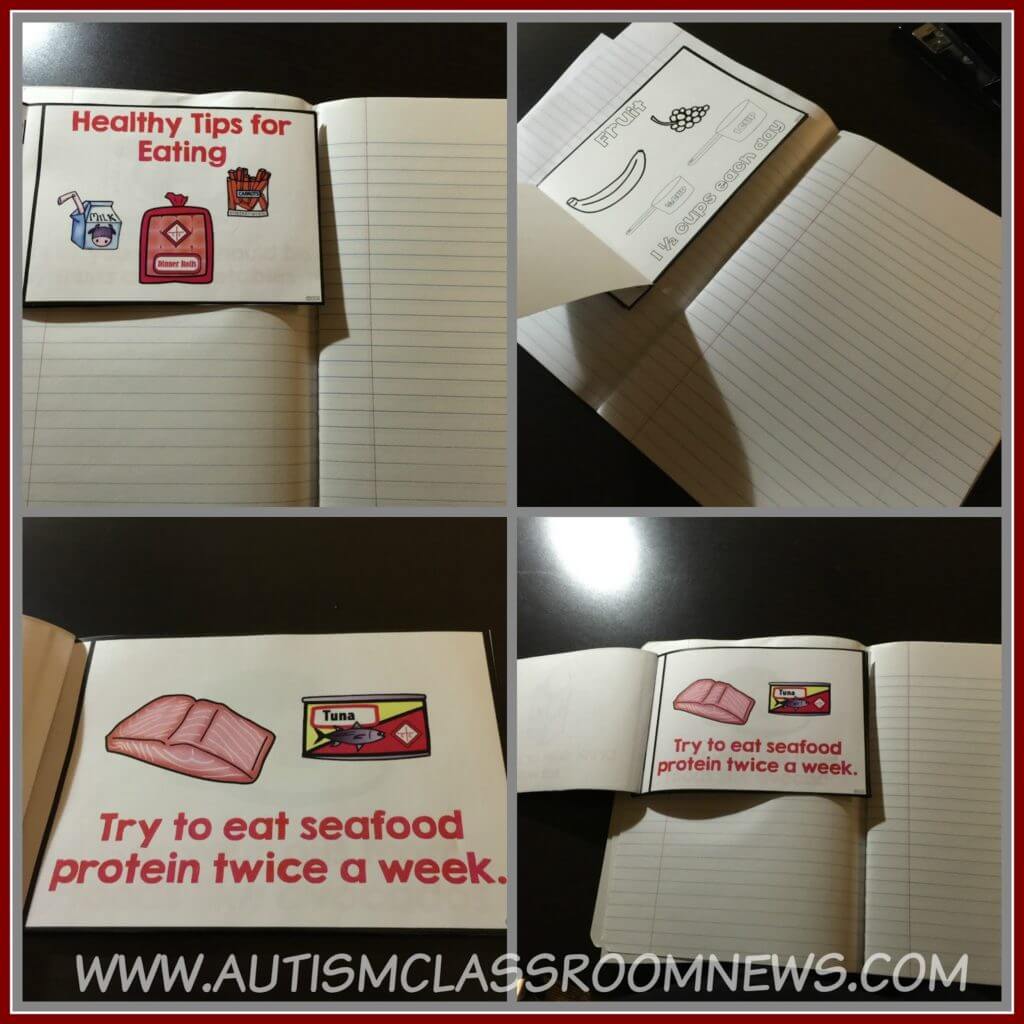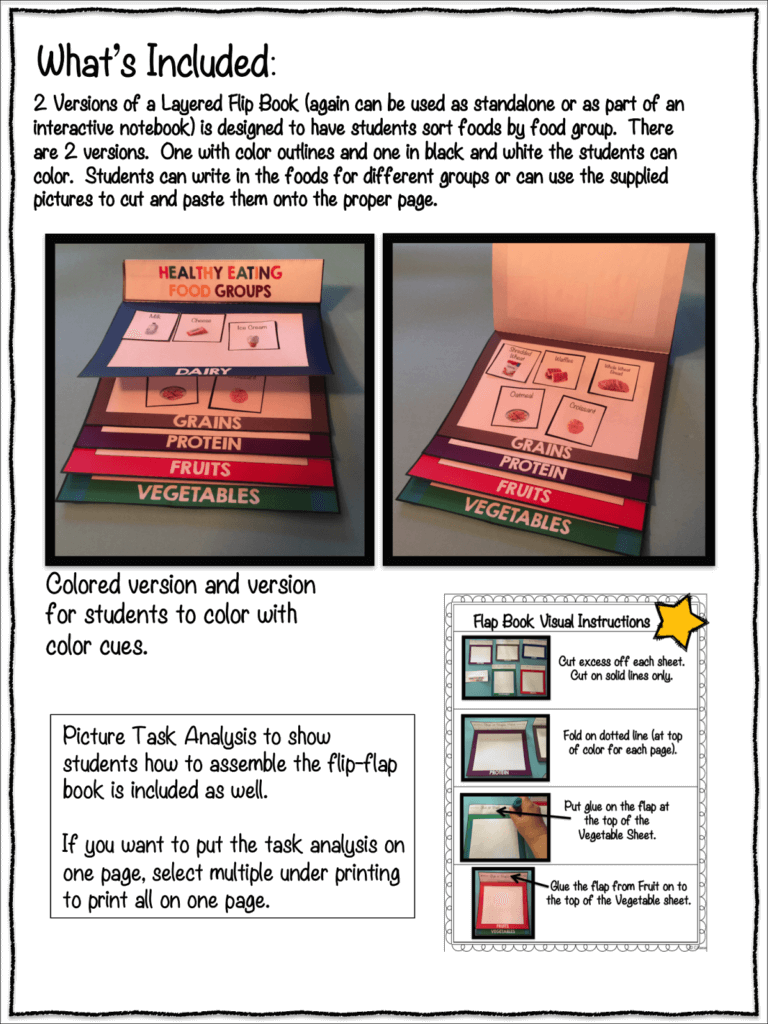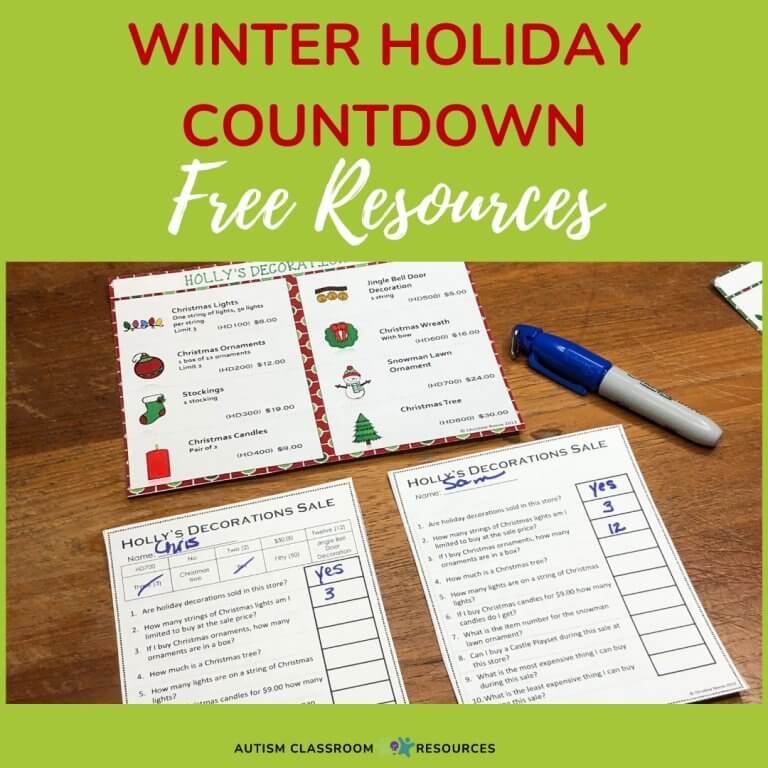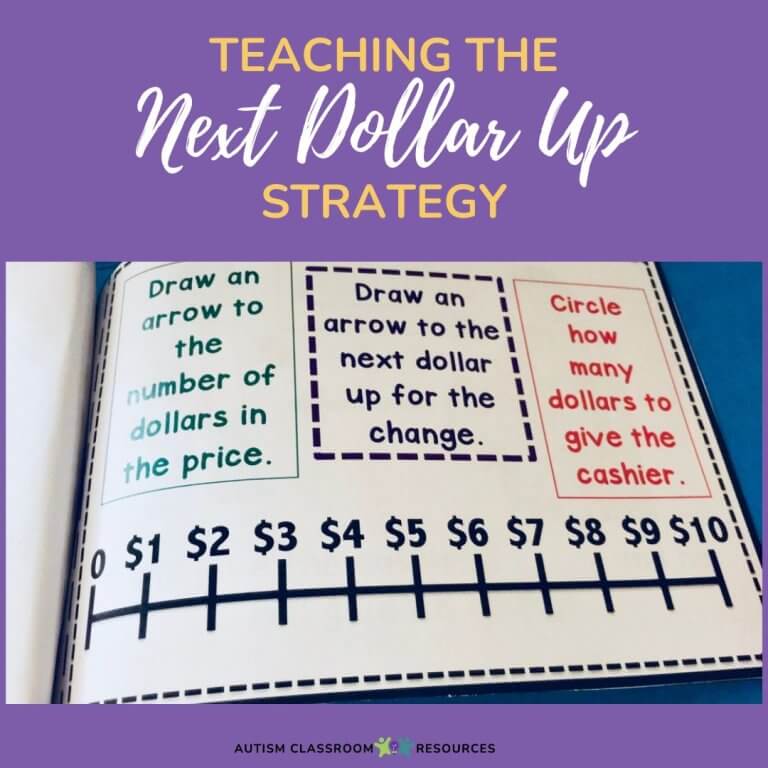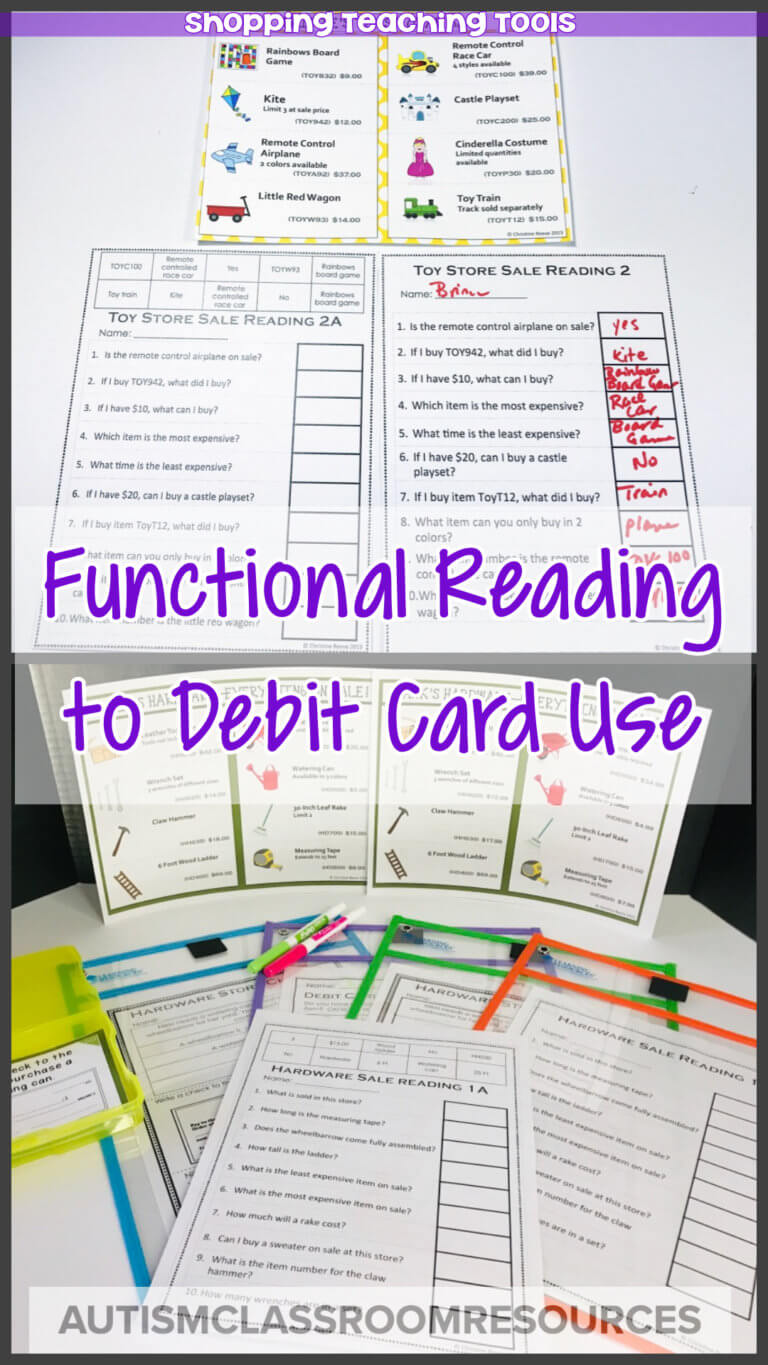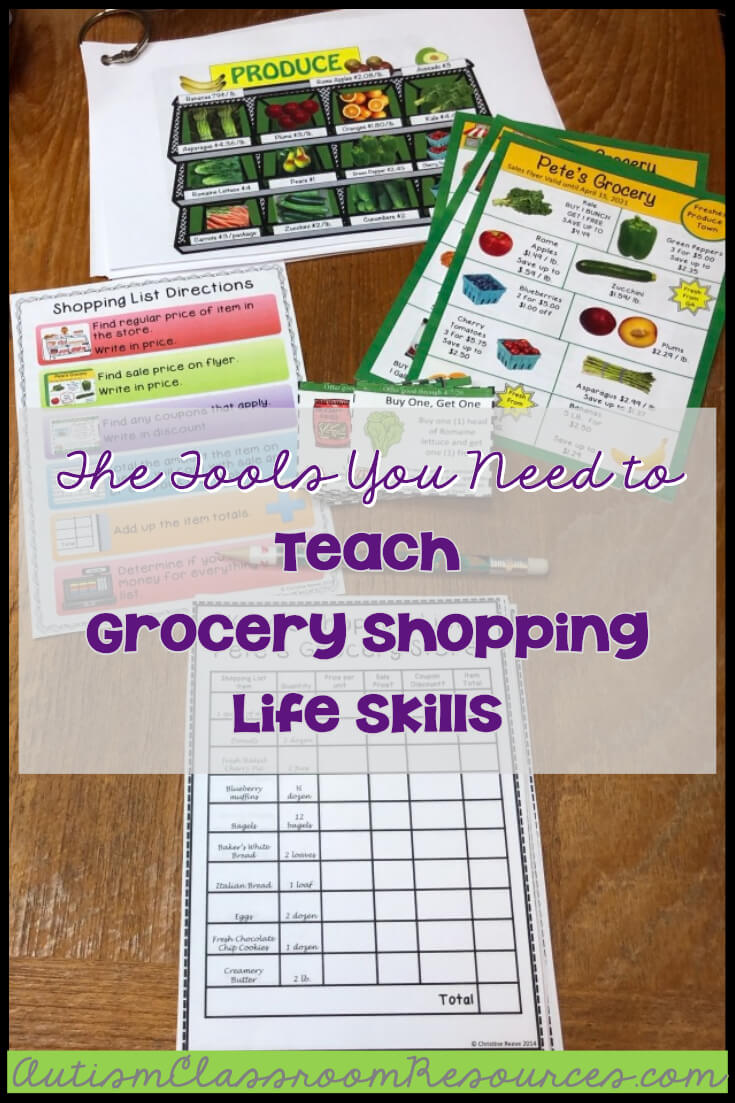Health goals are one of the areas that are covered in the Florida access points of the adapted Sunshine State Standards and they are probably something that are covered in yours as well. Whether they are part of the curriculum or not, making healthy food choices is a significantly important life skill for all our students. And of course, as we know for our students with autism and other complex learning styles, they need explicit instruction with lots of opportunities to practice skills as well as repetition. So that’s what I was trying to get at with this unit.
The unit focuses primarily on food groups and making healthy food choices, but also touches on where food comes from (animals or plants) and how much of each type of food we should eat. Understanding how to make food choices in relation to the food groups is important and I used the Choose My Plate graphics to help students see how much of their plate should be taken up by each type of food.

Within this unit, there are 6 file folder sorting activities for students to practice sorting foods across a variety of categories.
Foods or Treats (Clip Art of Foods)•Healthy
Foods or Treats (Photos of Food)•Bakery
or Produce items (Clip art)•Meat
or Fruit items (Clip art)•Food
from an Animal or a Plant (clip art or photos of food)•Sort
by 5 Food Groups (photos)
I used a variety of photos and clip art because I find that students need to be familiar with each. You can mix and match some of the pictures across different file folders. These are great for students to practice skills and to work on them during independent work time.
To supplement the file folders and to give you a permanent product to show mastery of skills, I included 10 sorting worksheets as well: 5 for sorting healthy foods from treats and 5 for sorting food from animals from food from plants. Again I used a mix of clip art and photos. My halloween freebie of sorting worksheets are included as part of this group.

In addition to those worksheets, I used the My Plate graphics to create worksheets for students to cut out pictures of foods, such as those from a lunch menu, and paste them on the plate in the correct spot. These could be completed as worksheets and can also be part of an interactive notebook activity.
 Then I got into mini-books to introduce new nutrition concepts to the students. There are 14 mini-books in all. There is 1 mini-book with tips for healthy eating. Seven mini-books are designed to teach students how much they should eat of each type of food. There are 7 because the amount they should consume varies dependent upon age and gender, so I created books for 4 to 8 year old children (same for boys and girls), 9-13 girls and boys, 14-18 boys and girls and 19 and older men and women for those transitioning from high school.
Then I got into mini-books to introduce new nutrition concepts to the students. There are 14 mini-books in all. There is 1 mini-book with tips for healthy eating. Seven mini-books are designed to teach students how much they should eat of each type of food. There are 7 because the amount they should consume varies dependent upon age and gender, so I created books for 4 to 8 year old children (same for boys and girls), 9-13 girls and boys, 14-18 boys and girls and 19 and older men and women for those transitioning from high school.
Then, there are 6 mini-books that focus on how much makes up a serving size. The FDA daily guidelines put their recommendations in cups or ounces of the different food groups and they included oils as something to include daily in your diet, even though they aren’t a separate food group. So, I created a book for each food group and oils about what constitutes a cup of vegetables or fruits or an ounce of grains. At the bottom of the picture you can see a flip flap book to practice that skill.
Each mini-book has a color and a black-and-white version. I decided that most of the studnets would color their own books and make them their own, but this way if you had a student who couldn’t do that you would have a pre-made one. This will also give the teacher a model to present to the class, that they just have to print, trim, fasten and you are ready to go.
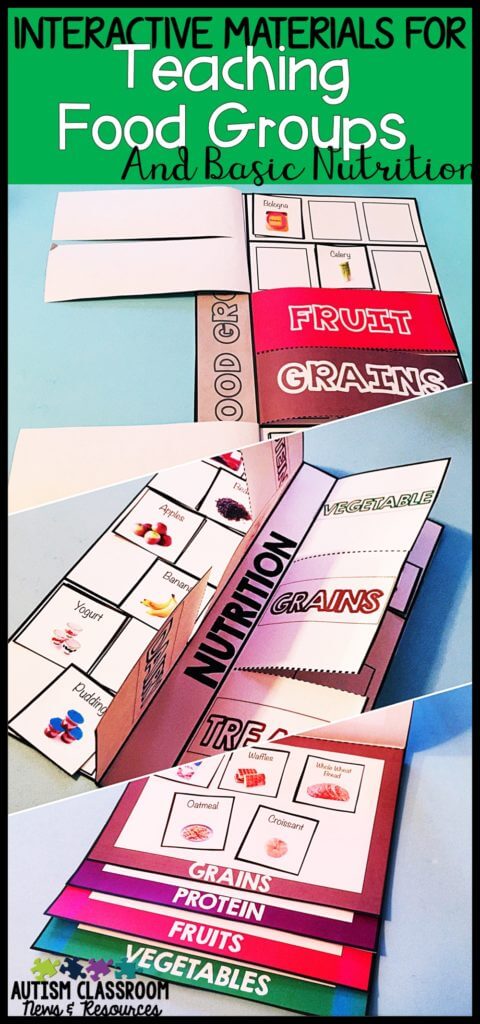
Then to practice the skills, I created 2 sets of foldables. Foldables are simply ways for students to practice and organize information they have learned and to keep for later reference. Because many of our students don’t write well, I included picture adaptations as well as templates and a picture task analysis for each type of foldable. Foldables work well with interactive notebooks as well as stand-alone activities. One double flip flap book focuses on identifying foods from the different food groups and treats (upper left corner). Another is similar to that one and focuses on identifying how much of each category should be included in their daily diet. I included base pages for the first that give boxes and pictures for the students to paste under each flap. If they are writers they could write their answers instead. For the daily servings, I created a fill-in-the-blank template where they just have to write in the number of cups or ounces for each category. Another flip-flap book (that can also be used iwth pictures or written answers) focuses on sorting by food group. A layer book, below, does the same. You can also see the beginning of the picture task analysis to show the students how to assemble the foldable.
So, if you download the preview in my store, you will see more pictures and examples. These can be used independently or as part of interactive notebooks (INB). I have wanted to explore using INBs more but feel like our students probably are going to need more instruction on how to use the materials, so I thought the task analyses would help. You can check out the product in my store HERE.
Until next time,


